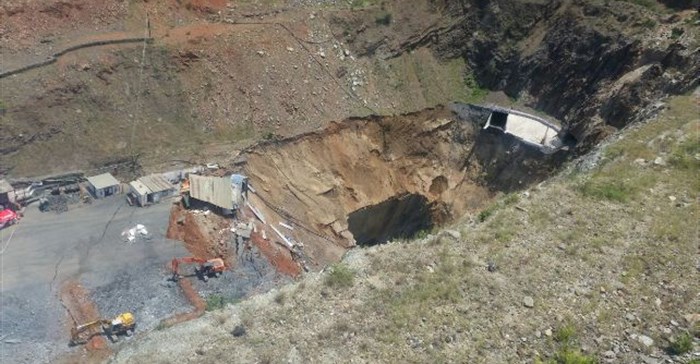






The unassuming device - which its inventor, Idrees Zaman, a visiting researcher from Germany's Bremen University, says could be made much smaller and cheaper - will easily fit inside a mine worker's helmet.
It could provide communication with similar nodes - ideally fitted to long bolts drilled into the ceiling to keep rock from shearing off and falling - placed along tunnel roofs or walls.
The battery-powered device could be made a lot smaller by drawing power off the battery pack used for cap lamps every mine worker has underground. Early cost estimates put the devices at less than R1,000 each, a fraction of the cost of low-frequency or high-frequency devices used for underground communications, Zaman says.
The device operates at 433MHz, a frequency that allows communications to travel through air, rock and broken rock. While tests are under way to determine the range of the devices that can also run off a mine's alternating current, initial indications are that 10m is easily achievable, Zaman says.
Zaman had been looking at devices to use in agriculture, rolling out a project in Cameroon, but soon realised that devices for data and communication left on the surface of farms would either be damaged by livestock or stolen, so he developed a system that could be buried.
He started pondering its application in mines and contacted his former professor in Pakistan, Asad Mahmood, now a senior lecturer at the School of Electrical and Information Engineering at Wits University. The electrical school was working closely with the School of Mining Engineering on another project and Mahmood knew that Fred Cawood, head of the Wits Mining Institute, which has received funding from companies such as Sibanye Stillwater, was scouting around various departments for solutions to the "missing miner" problem after the collapse of the Lily gold mine in Mpumalanga in February 2016.
"The mine of the future will have wireless communication and we are working on the possibility that this communication system will have more jobs. We are looking at reliable, multipurpose communication systems. So, having Lily in mind, if that happened again, how could we use this technology to locate missing miners?" Cawood says.
"What makes this system special is that it can do extra jobs and it's wireless."
Mahmood says expanding the system to accommodate robotic applications will be easy, but the system is in its early stages of development, with much work needed to perfect it.
The mining department has built a realistic underground tunnel in the basement of its building to simulate for students what the environment looks like. It is in this facility that the device has had its first test, buried under and behind 200 bags of pebbles to prove the concept of communicating through fallen rock.
Cawood says the device will be tested in a working underground mine in the first half of 2018, with interest coming from the institute's funders for the device that can monitor employees' vital signs and whereabouts during shifts.
The Chamber of Mines, which is working with the Council for Scientific and Industrial Research on modernising SA's mines and making them safer through technology, is interested in the device, says Alastair Macfarlane, the team's modernisation consultant and also a board member of Impala Platinum.
"The Wits initiative is very important and useful. It relies on what is referred to as a mesh, and will be very valuable from a health and safety point of view.
"Our bigger challenge is to communicate across much wider ranges. As far as I know the farthest you can communicate through rock is about 30m. We need a lot more than that," he says.
The team had hoped to be given an unused mine to run tests on technology under development, but this had been pushed back to September 2018.
"It's still on the cards, but we are looking for other options. It's incredibly important that we find [them] somewhere," he says.

For more than two decades, I-Net Bridge has been one of South Africa’s preferred electronic providers of innovative solutions, data of the highest calibre, reliable platforms and excellent supporting systems. Our products include workstations, web applications and data feeds packaged with in-depth news and powerful analytical tools empowering clients to make meaningful decisions.
We pride ourselves on our wide variety of in-house skills, encompassing multiple platforms and applications. These skills enable us to not only function as a first class facility, but also design, implement and support all our client needs at a level that confirms I-Net Bridge a leader in its field.
Go to: http://www.inet.co.za